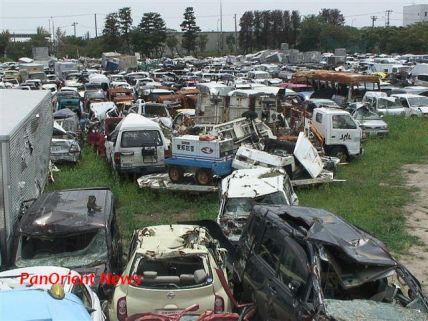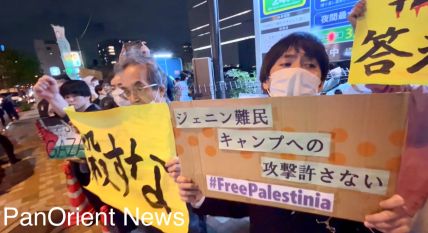|
|
Business
Fixing Japan’s Auto Supply Chain After the Earthquake
Sunday, July 24, 2011

Tokyo - (PanOrient News) A comprehensive study about the effects of the deadly March 11th earthquake and tsunami on the Japanese automotive supply chain concludes that repairs are almost complete and that Japanese automakers will be operating at more than 90% of pre-quake levels by September.
Already, as of the middle of June, their operating rate had recovered to more than 80%.
The study, titled ‘After the Earthquake: Fixing Japan’s Auto Supply Chain’, reported that some 500 suppliers were damaged by the twin disasters which struck the northeastern coast of Japan and forced Japanese automakers to shut down their operations for nearly a month.
In preparing the study, a Ward’s special report published on ‘wardsauto.com’, the author, journalist and PanOrient News contributor Roger Schreffler, contacted more than 100 suppliers of everything from microchips and engine controllers to plastic resins and steel.
Schreffler concluded that there will be no major overhaul of the supply chain once it is restored. “To do so,” he said, “would not be cost-effective, although surely adjustments will be made when a single supplier or plant has potential to disrupt the entire chain as happened with Renesas Electronics.”
The study does not expect Japanese manufacturers shift their most advanced materials to locations outside Japan. More so than automobiles and consumer electronics, it notes that advanced materials hold the key to the nation’s economic future.
As a result of the quicker-than-expected recovery, the study concludes that negative impact on automotive earnings will be less than initially forecast. On a consolidated basis, according to the study, all vehicle manufacturers and major suppliers are likely to report profits in fiscal 2011 which ends March 31st, 2012.
The study also reports that power shortages this summer have been exaggerated. “If shortages occur,” it predicts, “they will mainly be in Tokyo and the eight nearby prefectures which constitute the service area of Tokyo Electric Power Co.
“The rest of Japan, including the northern areas hit hardest by the earthquake and tsunami, are expected to have sufficient capacity without having to ask manufacturers to scale back operations.”
Tokyo Electric Power Co., Japan’s largest electric utility, suffered the greatest damage from the earthquake and tsunami.
The study notes that only 20% of vehicle production capacity and, by extension, 20% of materials and component output are located in Tokyo Electric Power Co.’s service area. Thus most or all Toyota, Honda, Suzuki, Mitsubishi, Mazda and Daihatsu plants will not be affected. The study includes a list of all 44 auto plants in Japan and where they are located in relation to Tokyo Electric Power Co.’s service area.
Elsewhere, the study identified five suppliers that have plants inside the 12.5-mile (20-km) exclusion zone surrounding the damaged Fukushima Dai-ichi nuclear power plant, thus are likely to be permanently closed.
“More problematic,” the study warns, “is if government expands the 12.5-mile (20-km) zone to 19 miles (30 km) or 25 miles (40 km) or 38 miles (60 km).”
So far, only five towns have been affected, according to the report: Namie, Tomioka, Odaka, Naraha and Futaba. All were identified on a special map created for the study.
The centerpiece of the study is a table comprising 66 of suppliers and 82 plants whose operations were disrupted for at least two weeks. Among them: Bosch Japan, Freescale Semiconductor, Fujikura Rubber, JSR, Merck KGaA, Mitsubishi Chemicals, Nippon Chemi-Con, Renesas Electronics and Sumitomo Metal Industries.
The study identifies what each plant produces (whether a base material or actual component), who it supplies, and its operational status.
For instance, the study reports that Mitsubishi Chemical’s two damaged naptha-cracking plants in Kashima, Ibaraki Prefecture, which produce ethylene for plastic automotive parts, will resume full production in early September.
Roger Schreffler is a veteran business journalist who has covered the Japanese energy scene for more than twenty years.
Photo: Cars destroyed by the March 11th tsunami are dumped near Sendai Airport.
PanOrient News
© PanOrient News All Rights Reserved.
|
|

